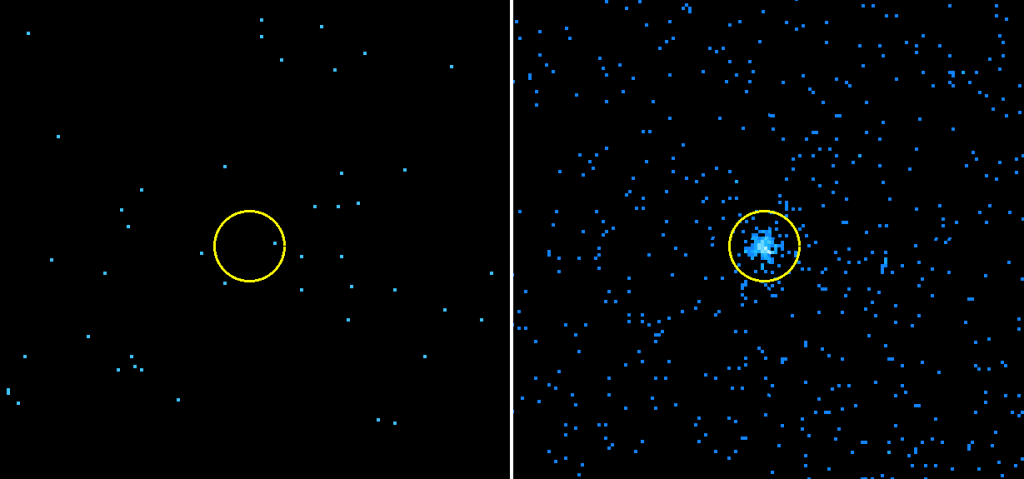Extreme events in space will be identified faster than ever before thanks to a new tool developed by experts at the University of Leicester’s School of Physics and Astronomy, write Dr. Phil Evans.
Who doesn’t love a good light display? The Universe certainly knows how to put on a firework show and some of its more powerful pyrotechnics provide blasts of X-rays, that can only be detected from space. For astronomers, these are not just awesome to look at but are powerful tools, giving us insight into physics in extreme environments you can’t reproduce in a lab. The brighter explosions can also be seen from a long way away, helping us to study the distant, young Universe.
But there’s a snag: as Douglas Adams famously noted, “Space is big, really big,” and we don’t know where the next explosion is going to occur. The brightest events, often those nearest to Earth, are found by telescopes that can monitor the whole sky, but often X-ray transients are only found when astronomers look through archival data, to see if there are any transient events — flashes of X-rays where none have been seen before — that happen to be in the field of view. This approach has born fruit, finding interesting and strange new types of objects such as “fast X-ray transients” and “quasi-periodic eruptions”. The problem is, by the time these objects are found, they are already months or even years old, and the explosion has finished.
Not any more. A new tool, known as the Living Swift XRT Point Source Catalogue (or LSXPS if that’s a bit of a mouthful), has been built by experts at the University of Leicester, which can discover and announce new transient X-ray sources within just a few hours of their occurrence. It works with data from the Swift satellite; as soon as they have been downlinked and processed, dedicated software identifies the X-ray sources and then checks to see if any of them are new, quickly notifying the Swift team of anything it finds, and so allowing extra observations to be taken quickly, while the explosion is still fresh.

This exciting new facility comes with a full catalogue of X-ray sources seen by Swift, which is continuously updated, unlike traditional X-ray catalogues which are only revised every few years. This ‘living’ catalogue is crucial to working out whether or not an X-ray source is new; and it provides details of more than a quarter of a million X-ray emitting objects.

So, has this new facility found anything especially exciting yet? You’ll have to wait for our next blog post to find out…

 Subscribe to Physics & Astronomy's posts
Subscribe to Physics & Astronomy's posts
Recent Comments